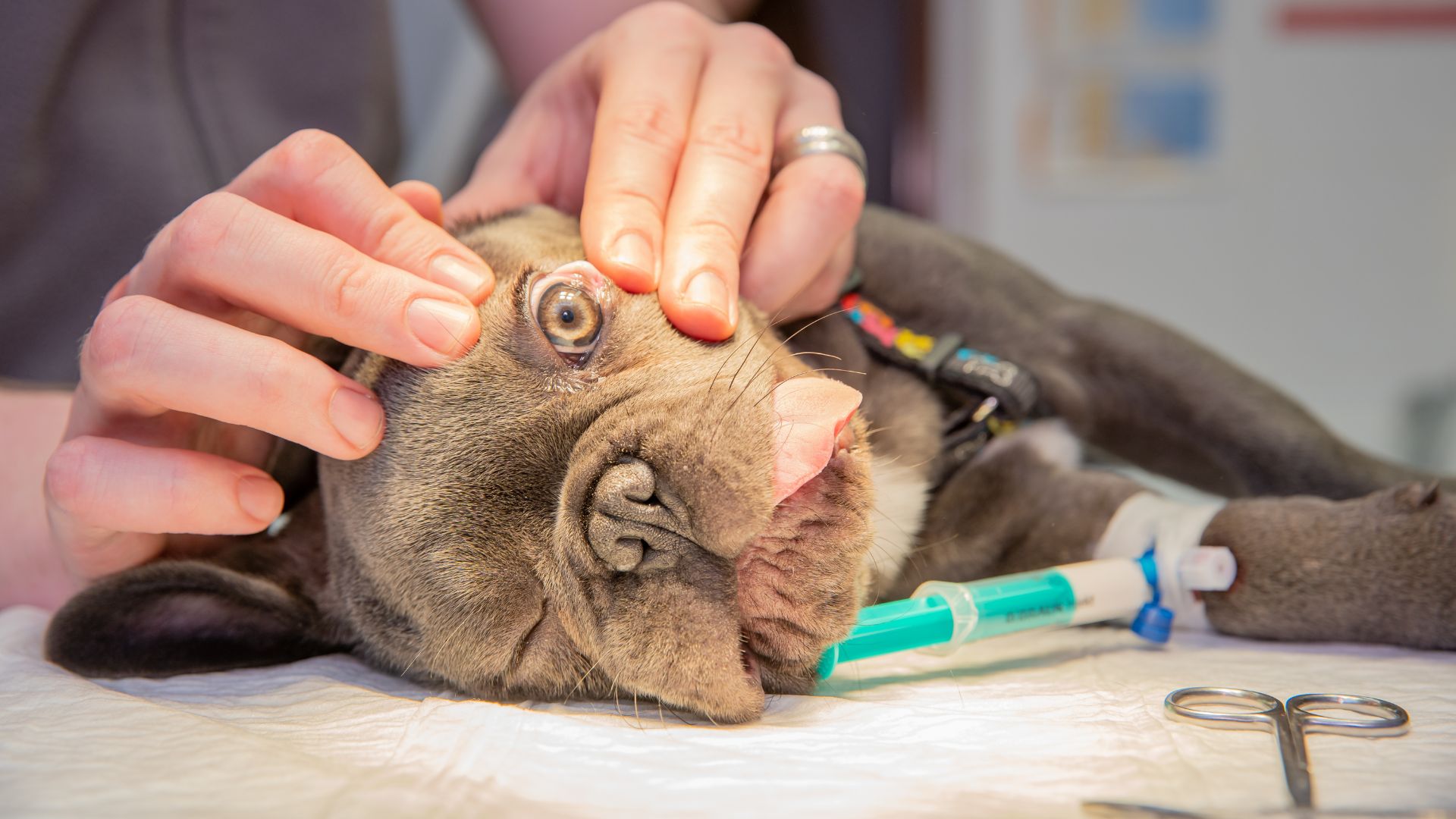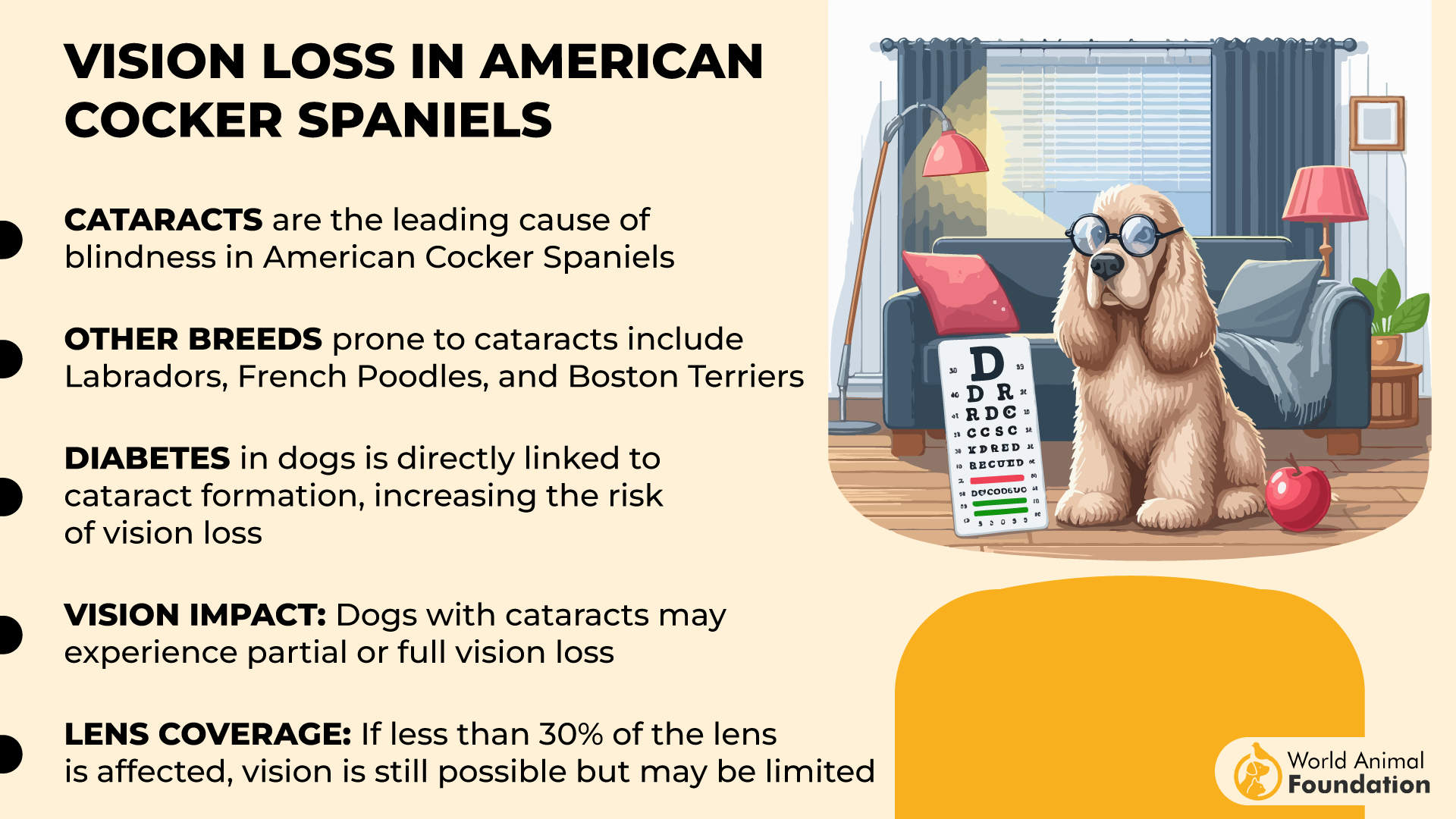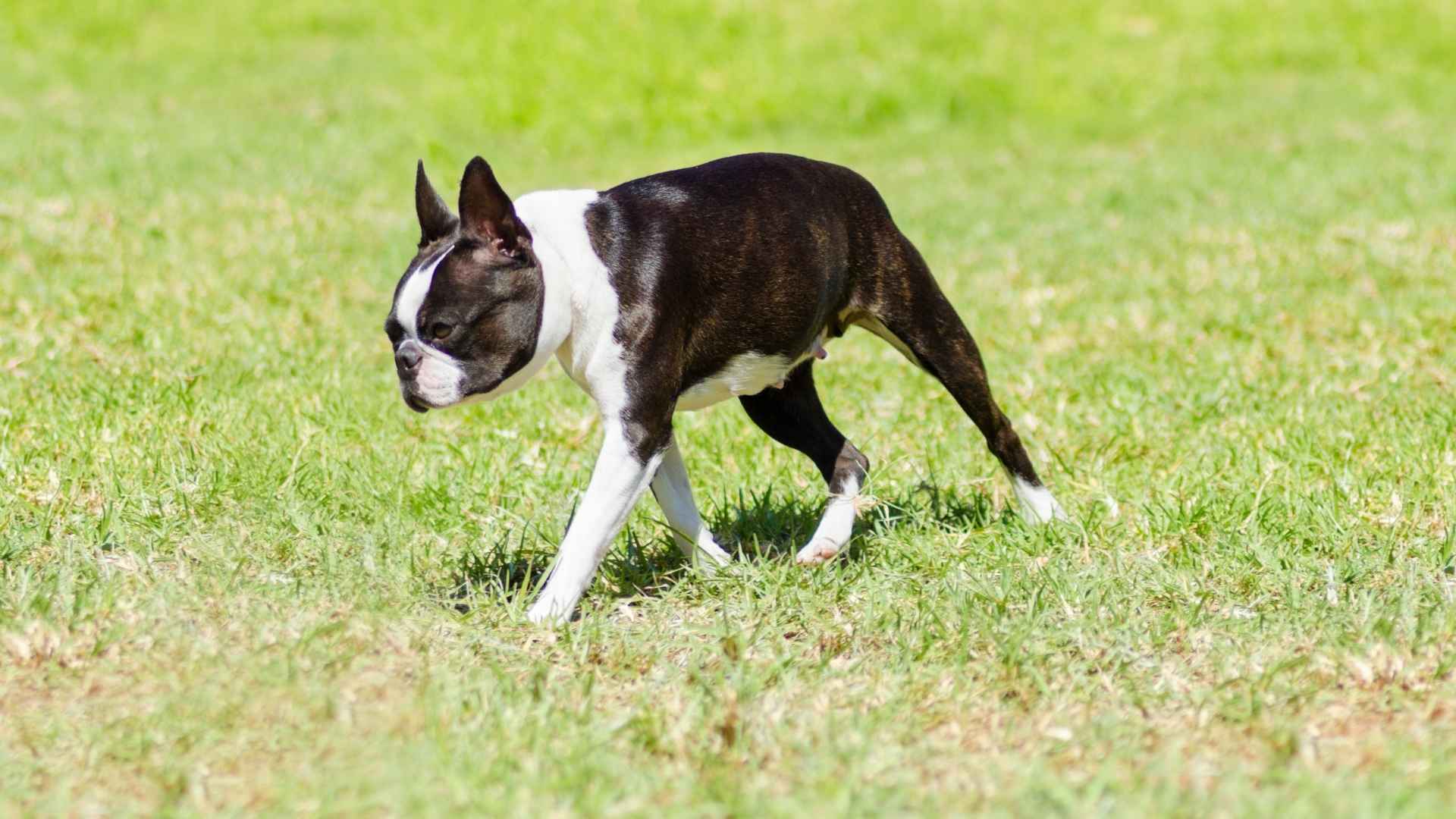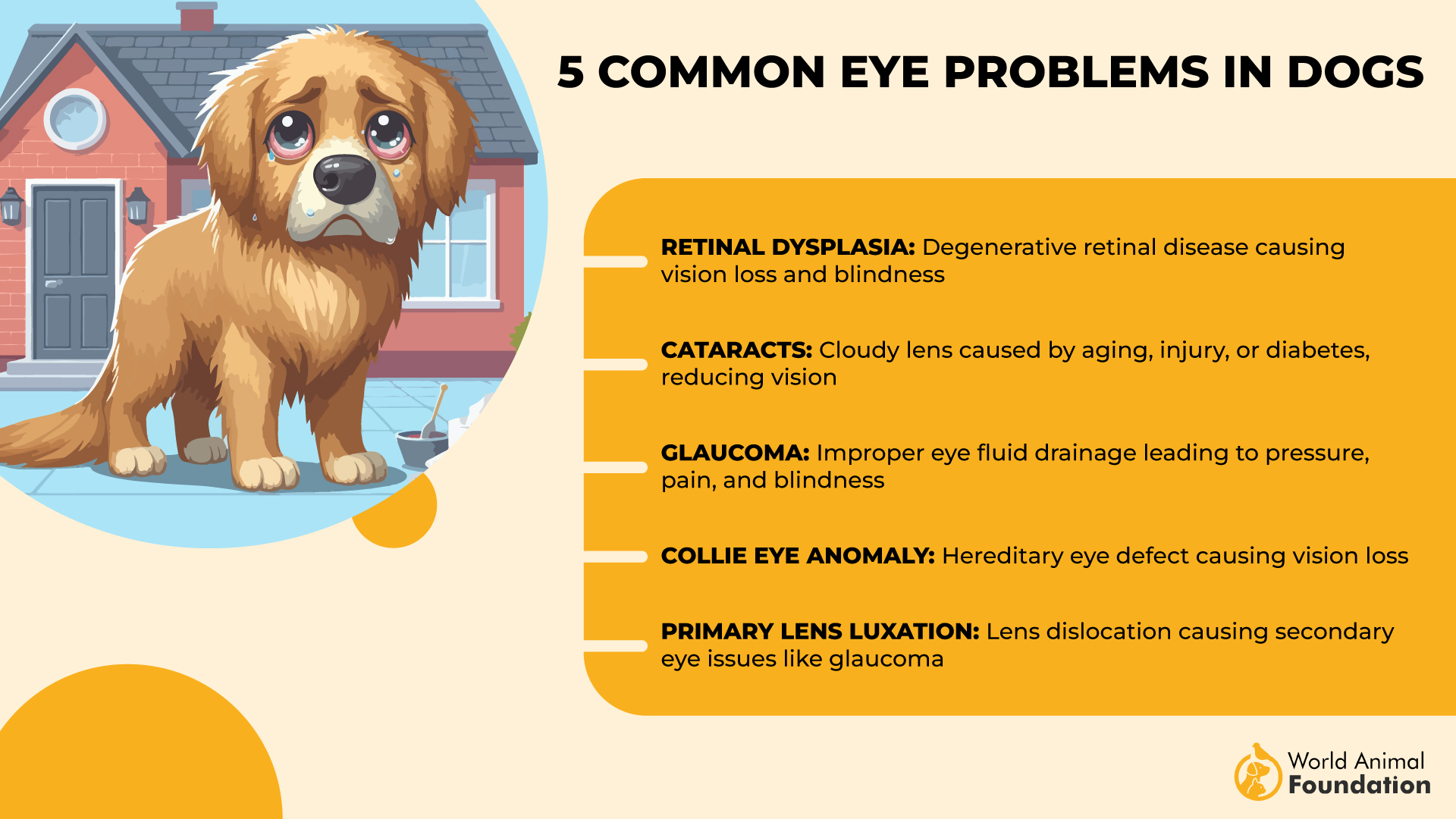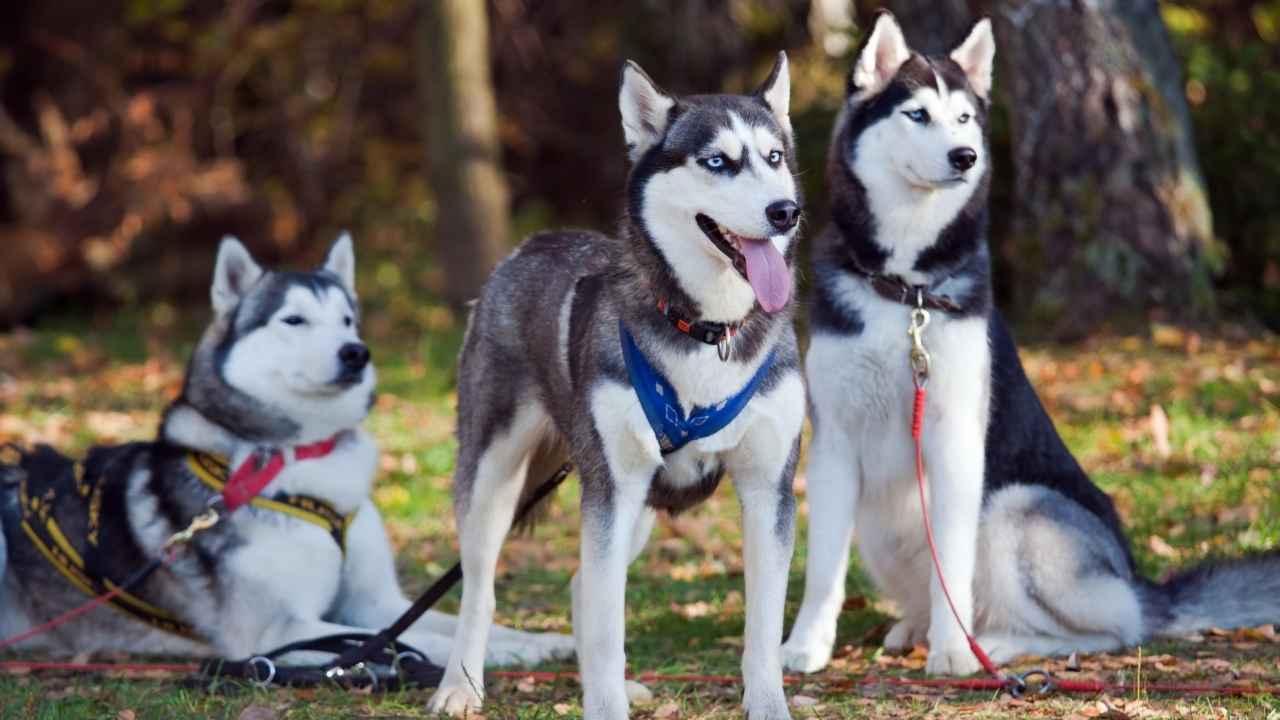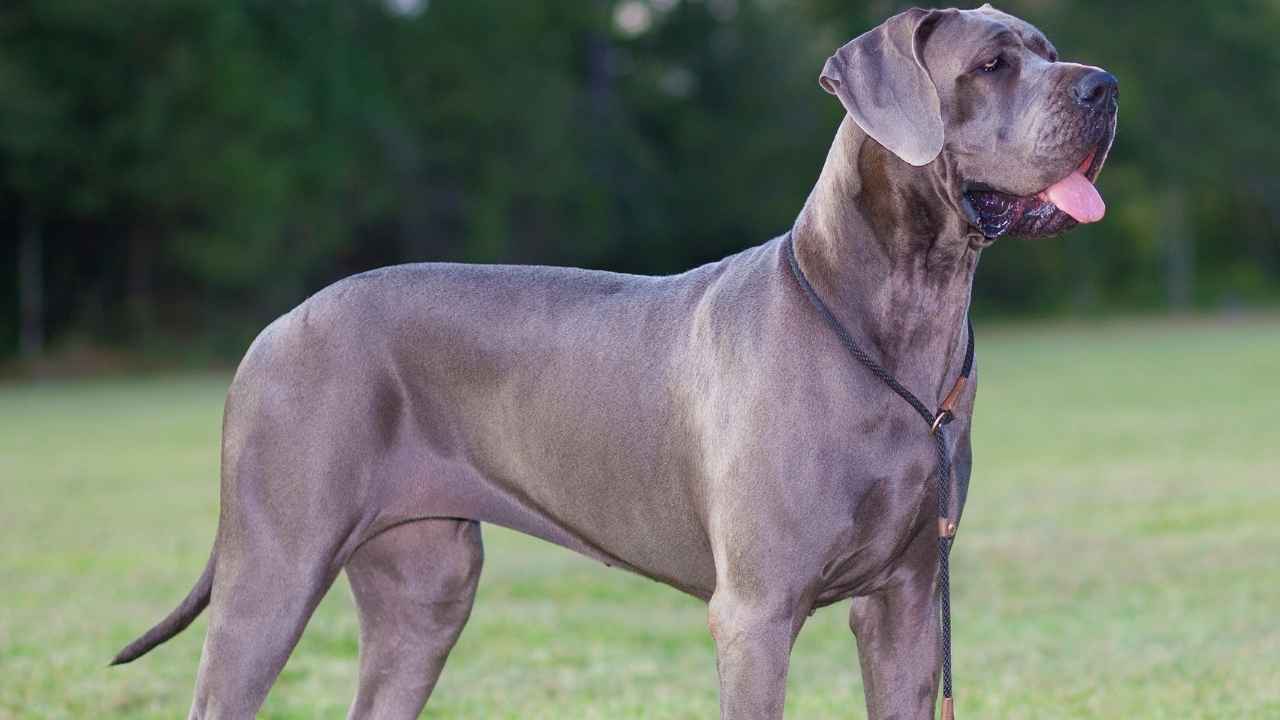When choosing a furry companion, the health and wellbeing of your future pet are paramount considerations. While all dog breeds come with their unique charms and quirks, certain breeds have inherited predispositions that may require extra attention, particularly when it comes to their eyesight. “7 Dog Breeds With Bad Eyes” delves into the fascinating world of canine ophthalmology, spotlighting breeds that often contend with vision-related issues. Understanding these challenges not only helps potential dog owners make informed decisions but also ensures that these lovable dogs receive the care and support they need to thrive visually and live their best lives.
Dogs bring immense joy to our lives, but they, too, face health challenges. One of the most emotional and impactful issues is eye problems, which can significantly affect their overall well-being. Many dog breeds are genetically predisposed to eye conditions, making it essential for us, as responsible pet owners, to be vigilant.
Early detection and proper care can make a world of difference in managing these conditions and ensuring our pets continue to live comfortably. Whether it’s something as common as cataracts or more complex conditions like progressive retinal atrophy (PRA), understanding these health risks is key. In this article, we’ll explore the breeds most affected by eye problems and share tips on how to care for them.
Did you know?
Dogs with healthy eyes can see more shades of blue and yellow, but not red, unlike humans!
Dog Breeds With Bad Eyes
1. American Cocker Spaniel
The American Cocker Spaniel is a beautiful breed known for its expressive eyes. Unfortunately, their deep-set eyes make them prone to conditions like cataracts, progressive retinal atrophy (PRA), and conjunctivitis, as mentioned by AKC. These issues can significantly affect their vision and comfort, especially as they age. Regular cleaning of the eye area can prevent infections and manage tear stains.
Cataracts are especially common, causing cloudiness in the lens, and may require surgical intervention. PRA, on the other hand, is a degenerative condition that leads to blindness, and while there’s no cure, early detection helps. Routine eye exams are crucial in catching these conditions before they impact your dog’s life too drastically. With the right care, your Spaniel can still enjoy its playful nature.
In addition to these concerns, Cocker Spaniels also face the risk of conjunctivitis, an inflammation of the eye. It can cause redness and irritation, but with prompt veterinary care, most cases are treatable. Preventing eye irritation and ensuring their eyes remain clean can reduce these risks. Stay proactive in your dog’s care, and they’ll continue to lead a happy, comfortable life.
Fun Fact
Did you know that American Cocker Spaniels are one of the most popular breeds in the U.S.? Their affectionate and friendly nature makes them excellent family pets!
2. Boston Terrier
Boston Terriers, with their strikingly large eyes, are prone to numerous eye issues, including dry eye syndrome, corneal ulcers, and glaucoma. Their bulging eyes make them more vulnerable to injury and irritation, and they also face an increased risk of developing cataracts. This breed’s unique face structure, while endearing, can put additional strain on their delicate eyes.
Dry eye syndrome is particularly common in this breed, which can lead to discomfort and vision problems if left untreated. VCA states that without adequate tear production, their eyes become dry and irritated. Fortunately, special eye drops prescribed by your vet can alleviate symptoms and protect their vision. Regular check-ups ensure any changes are addressed early, preventing further complications.
Glaucoma and cataracts can also significantly impact their quality of life. Untreated, these conditions can result in permanent vision loss. By staying on top of their eye health with frequent vet visits and routine care, you can catch problems early. Protecting their eyes through daily hydration and monitoring will ensure that your Boston Terrier continues to live a joyful, active life.
Fun Fact
Boston Terriers are often called “American Gentlemen” because of their polite and friendly disposition. Despite their health challenges, they’re known for their charming and sociable personalities!
3. Labrador Retriever
Labrador Retrievers are known for their friendly, outgoing nature, but they are also prone to several eye problems. Cataracts are among the most common, leading to cloudiness in the eye. Without proper treatment, cataracts can lead to blindness. Routine eye exams help catch this condition early, increasing the chances of successful intervention through surgery or medication.
In addition to cataracts, Labradors may also suffer from retinal dysplasia, a genetic condition that affects the retina and leads to partial vision loss, VVC highlights. While there’s no cure for retinal dysplasia, early detection allows for better management. Your vet may recommend lifestyle adjustments or medications to slow the progression of this condition, ensuring your dog remains as comfortable as possible.
Preventing eye problems in Labradors requires proactive care, including a healthy diet, regular eye exams, and prompt treatment of any symptoms. With the right attention, your Labrador can continue to live an active, loving life despite the potential for eye-related issues. Early intervention is key to preserving their sight and maintaining their happiness.
Fun Fact
Labrador Retrievers are consistently ranked as one of the most popular dog breeds worldwide. Their intelligence and friendly demeanor make them fantastic family pets, even with the potential for eye conditions!
4. Golden Retriever
Golden Retrievers are not just beautiful but also highly susceptible to several eye conditions, including cataracts, entropion, and progressive retinal atrophy (PRA). These conditions can affect their sight, causing pain and discomfort. Cataracts may cloud their lens and affect vision, while PRA can lead to eventual blindness, requiring constant monitoring and early veterinary intervention.
Entropion, a condition where the eyelids roll inward, can irritate the corneas and cause significant pain. Thankfully, surgery can often correct the issue, but early intervention is necessary. Like with cataracts and PRA, routine eye exams are essential in detecting these problems before they worsen. Regular vet visits ensure your Golden Retriever’s eyes remain as healthy as possible.
Although managing these conditions may seem overwhelming, don’t be discouraged. By staying on top of your Golden Retriever’s health with proactive care and regular eye checks, you can ensure they live a full, happy life. Their gentle nature and joyful spirit will continue to shine, even in the face of challenges. Early intervention makes a world of difference.
Fun Fact
Golden Retrievers are not only beloved for their beauty and intelligence but also for their service dog capabilities. They excel as guide dogs, helping individuals with vision impairments, making them a breed that truly understands the importance of vision!
5. Poodle
Poodles, whether standard, miniature, or toy, are highly intelligent and active dogs, but they are also prone to a variety of eye conditions, including progressive retinal atrophy (PRA) and glaucoma. PRA, in particular, is a hereditary condition that causes progressive blindness. Though there’s no cure for this condition, early detection can help slow its progression and improve your dog’s quality of life.
Glaucoma is another eye issue common in Poodles, where the pressure inside the eye increases, damaging the optic nerve. Left untreated, glaucoma can result in vision loss. Regular eye exams and prompt treatment are crucial to managing this condition, ensuring your Poodle continues to thrive. Your vet may recommend specific treatments to control the pressure and preserve vision.
Purina suggests that with attentive care and regular vet visits, your Poodle can lead an active, happy life. Managing eye conditions early and properly allows your Poodle to enjoy their playful, loving nature without significant impairment. Stay vigilant, and you’ll help your Poodle live life to the fullest.
Fun Fact
Poodles are not just famous for their hypoallergenic coats, but also for their high intelligence and trainability. They’re often used in competitive dog sports due to their keen instincts and desire to please their owners!
6. Siberian Husky
Siberian Huskies are admired for their striking eyes, which can range from deep blue to multicolored. However, they are also prone to several eye conditions such as cataracts, progressive retinal atrophy (PRA), and corneal dystrophy. Cataracts, which cause cloudiness in the lens, are common and can greatly affect their vision. Early intervention through surgery can restore their sight if diagnosed promptly.
PRA is a genetic disorder that slowly causes vision loss in Huskies. Though it has no cure, early detection is crucial to managing it effectively. Regular vet visits and monitoring their vision for any changes can help slow the disease’s progression. With proper care, your Husky can still lead an active and fulfilling life despite the challenges.
Corneal dystrophy, a condition that affects the cornea, is another concern for this breed. It can cause cloudiness and discomfort. However, with the right treatment, many Huskies can live comfortably with this condition. Routine eye exams and maintaining overall health will help your Husky’s eyes remain strong and clear. Always prioritize early detection and care.
Fun Fact
Siberian Huskies are known for their captivating eyes, which can sometimes be one of each color! Their unique eye colors and wolf-like appearance have earned them a special place in the hearts of dog lovers.
7. Great Dane
Great Danes, known for their impressive size and stature, are also vulnerable to several eye issues, as noted by Atascazoo Animal Hospital. Cataracts, entropion, and progressive retinal atrophy (PRA) are some of the most common conditions they face. Cataracts often develop as they age, clouding their vision and potentially leading to blindness. Surgery can often correct the issue, but early detection is key to the best outcome.
Entropion is another concern, where the eyelids roll inward, causing irritation and pain to the cornea. This condition typically requires surgical intervention to fix. Early detection and treatment prevent long-term discomfort and ensure your Great Dane can continue enjoying a full, happy life. Their loving and gentle nature deserves to be cared for, especially when facing eye challenges.
Despite their potential eye issues, with regular veterinary check-ups and early intervention, your Great Dane can still live a fulfilling life. Ensuring their vision is protected will allow them to continue being the majestic companion they are. Don’t let these conditions define their happiness—take action early, and you’ll ensure they thrive.
Fun Fact
Great Danes are often referred to as “gentle giants.” Their calm, affectionate nature combined with their large size makes them lovable companions, even with the occasional eye health challenges they may face.
Conclusion
Eye problems can seem like a daunting challenge, but they are not the end of your dog’s story. Whether it’s the American Cocker Spaniel or the Siberian Husky, each dog has its own set of challenges with the dog’s vision. With early detection, proper care, and plenty of love, these obstacles can be managed.
Watch for yellow or green discharge from the dog’s eyes, as this can indicate eye infections or even conditions like cherry eye. Visible third eyelid and head trauma may also signal potential problems. Don’t ignore early signs; consult a veterinary ophthalmologist to ensure the best care for your dog. Don’t be discouraged—every challenge can be overcome.
By staying vigilant, you’ll ensure your dog enjoys a long, happy life filled with love, play, and joy.
In conclusion, while certain dog breeds are more prone to eye problems, responsible pet ownership can significantly mitigate these issues. Breeds such as Pugs, Shih Tzus, and Bulldogs are known for their charming appearance but also face challenges with conditions like cataracts, corneal ulcers, and progressive retinal atrophy. Regular veterinary check-ups, attentive care, and an awareness of potential symptoms can help manage these health risks, ensuring a better quality of life for the affected dogs. Ultimately, understanding each breed’s specific needs empowers pet owners to provide the best care possible, allowing their canine companions to lead healthier, happier lives.

